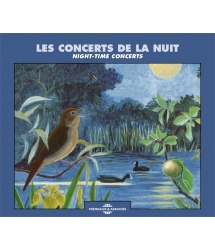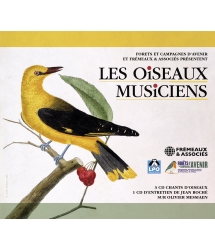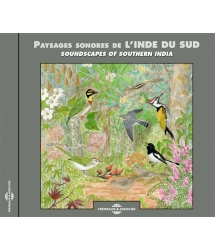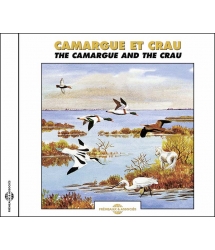- Our Catalog
- Philosophy
- Philosophers of the 20th century and today
- History of Philosophy (PUF)
- Counter-History and Brief Encyclopedia by Michel Onfray
- The philosophical work explained by Luc Ferry
- Ancient thought
- Thinkers of yesterday as seen by the philosophers of today
- Historical philosophical texts interpreted by great actors
- History
- Books (in French)
- Social science
- Historical words
- Audiobooks & Literature
- Our Catalog
- Jazz
- Blues
- Rock - Country - Cajun
- French song
- World music
- Africa
- France
- Québec / Canada
- Hawaï
- West Indies
- Caribbean
- Cuba & Afro-cubain
- Mexico
- South America
- Tango
- Brazil
- Tzigane / Gypsy
- Fado / Portugal
- Flamenco / Spain
- Yiddish / Israel
- China
- Tibet / Nepal
- Asia
- Indian Ocean / Madagascar
- Japan
- Indonesia
- Oceania
- India
- Bangladesh
- USSR / Communist songs
- World music / Miscellaneous
- Classical music
- Composers - Movie Soundtracks
- Sounds of nature
- Our Catalog
- Youth
- Philosophy
- News
- How to order ?
- Receive the catalog
- Manifesto
- Dictionnary











- Our Catalog
- Philosophy
- Philosophers of the 20th century and today
- History of Philosophy (PUF)
- Counter-History and Brief Encyclopedia by Michel Onfray
- The philosophical work explained by Luc Ferry
- Ancient thought
- Thinkers of yesterday as seen by the philosophers of today
- Historical philosophical texts interpreted by great actors
- History
- Books (in French)
- Social science
- Historical words
- Audiobooks & Literature
- Our Catalog
- Jazz
- Blues
- Rock - Country - Cajun
- French song
- World music
- Africa
- France
- Québec / Canada
- Hawaï
- West Indies
- Caribbean
- Cuba & Afro-cubain
- Mexico
- South America
- Tango
- Brazil
- Tzigane / Gypsy
- Fado / Portugal
- Flamenco / Spain
- Yiddish / Israel
- China
- Tibet / Nepal
- Asia
- Indian Ocean / Madagascar
- Japan
- Indonesia
- Oceania
- India
- Bangladesh
- USSR / Communist songs
- World music / Miscellaneous
- Classical music
- Composers - Movie Soundtracks
- Sounds of nature
- Our Catalog
- Youth
- Philosophy
- News
- How to order ?
- Receive the catalog
- Manifesto
- Dictionnary
FORESTS OF THE JURA - THE LYNX'S REALM
FREMEAUX & ASSOCIES
Ref.: FA636
EAN : 3661585025146
Author : 23|130
Artistic Direction : BORIS JOLLIVET
Label : Frémeaux & Associés
Total duration of the pack : 1 hours 5 minutes
Nbre. CD : 1
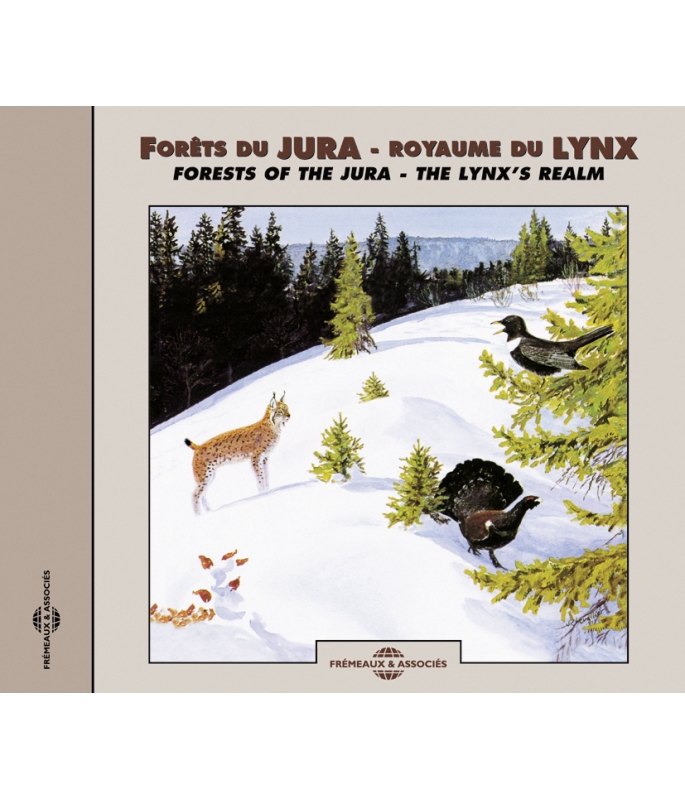
FORESTS OF THE JURA - THE LYNX'S REALM
FORESTS OF THE JURA - THE LYNX'S REALM
“This CD of more than 66 minutes concerns the fascinating world of sounds of the Jura forests, realm of the lynx, which participates in these concerts every winter. The listener is taken, during the different seasons, into different places such as: impenetrable or open forests, narrow gorges, and even into a bat filled cave.” Boris Jollivet & Patrick Frémeaux
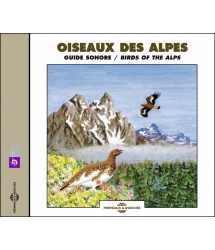
BIRDS OF THE ALPS - SOUND GUIDE
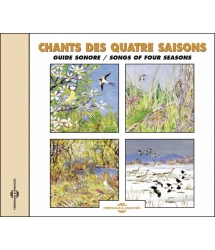
SONGS OF THE FOUR SEASONS
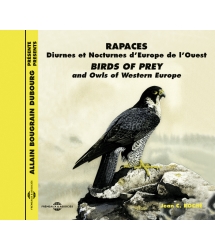
BIRDS OF PREY AND OWLS OF WESTERN EUROPE
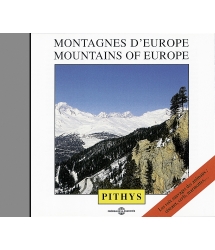





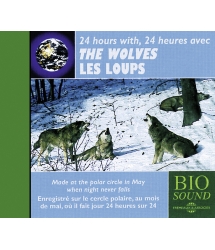
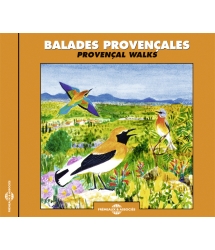
-
PisteTitleMain artistAutorDurationRegistered in
-
1Merle Noir et Grive Musicienne (Blackbird and Song Thrush)Boris JolivetBoris Jollivet00:00:282007
-
2Rougegorge (Robin)Boris JolivetBoris Jollivet00:04:392007
-
3Prénovel début de concert (Prénovel Start of the concert)Boris JolivetBoris Jollivet00:00:142007
-
4Chouette de Tengmalm (Tengmalm's Owl)Boris JolivetBoris Jollivet00:00:142007
-
5Chevreuil (Roe Deer)Boris JolivetBoris Jollivet00:01:272007
-
6Crapauds sonneurs, Troglodyte Mignon, Grive Musicienne (Yellow-Bellied toads)Boris JolivetBoris Jollivet00:02:462007
-
7Foret aux Priards Ambiance générale (Forest atmosphere at Les Priards)Boris JolivetBoris Jollivet00:00:202007
-
8Cassenoix Moucheté (Nutcracker)Boris JolivetBoris Jollivet00:00:272007
-
9Pic Epeiche (Great Spotted Woodpecker)Boris JolivetBoris Jollivet00:00:162007
-
10Chamois (Chamois)Boris JolivetBoris Jollivet00:00:292007
-
11Mésange Noire (Coal Tit)Boris JolivetBoris Jollivet00:00:302007
-
12Milan Noir (Black Kite)Boris JolivetBoris Jollivet00:00:342007
-
13Grive Musicienne, Mésange Charbonnière (Song Thrush)Boris JolivetBoris Jollivet00:02:002007
-
14Sur les rives du Doubt, début de concert (On the Banks of the Doubs, start of the concert)Boris JolivetBoris Jollivet00:00:142007
-
15Fauvettes des Jardins (Garden Warbler)Boris JolivetBoris Jollivet00:01:442007
-
16Guepiers d'Europe (A Bee-Eater Colony)Boris JolivetBoris Jollivet00:00:182007
-
17Loriot d'Europe (Golden Oriole)Boris JolivetBoris Jollivet00:00:152007
-
18Verdier d'Europe (Greenfinch)Boris JolivetBoris Jollivet00:00:312007
-
19Dans les Gorges du Doubt, début du doncert (In the Doubs Gorges, start of a nocturnal wiunter concert)Boris JolivetBoris Jollivet00:00:332007
-
20Grand Duc d'Europe (European Eagle Owl)Boris JolivetBoris Jollivet00:00:172007
-
21Renard (Fox)Boris JolivetBoris Jollivet00:03:102007
-
22Minioptères de Schreibers (Schreiber's Bats)Boris JolivetBoris Jollivet00:02:072007
-
23Moineaux Domestiques, Merle Noir (House Sparrows, Blackbird)Boris JolivetBoris Jollivet00:04:272007
-
24Bergeronette des Ruisseaux (A Grey Wagtail)Boris JolivetBoris Jollivet00:01:422007
-
25Infiltration de l'eau au bord d'une tourbière (Infiltration of water at the edge of a peat bog)Boris JolivetBoris Jollivet00:01:372007
-
26Tourbière au Près de La Rixouse, début de Concert (Atmosphere at a peat bog near Près de la Rixouse)Boris JolivetBoris Jollivet00:00:262007
-
27Rousserolle Verderolle (Marsh Warbler)Boris JolivetBoris Jollivet00:00:352007
-
28Pipit des Arbres, Bruant Zizi, Grenouille de Lessona (Tree Pipit, Cirl Bunting, Poll Frog)Boris JolivetBoris Jollivet00:01:402007
-
29Lynx à Aromas, Début de Concert (The Lynx at Aromas, Start of the concert)Boris JolivetBoris Jollivet00:00:262007
-
30Le Mâle Hurle et la Mésange Bleue (The male howls and a Blue Tit)Boris JolivetBoris Jollivet00:00:532007
-
31Mésange Charbonnière 2 (Great Tit)Boris JolivetBoris Jollivet00:03:272007
-
32Aux Piards, début de Concert (At Les Piards, Start of the concert)Boris JolivetBoris Jollivet00:00:182007
-
33Hiboux Moyen Duc (Young Long-Eared Owls)Boris JolivetBoris Jollivet00:00:212007
-
34Hibou Moyen Duc Adulte (Long-Eared Owls Adult)Boris JolivetBoris Jollivet00:00:522007
-
35Chevreuil (Roe Deer)Boris JolivetBoris Jollivet00:00:282007
-
36Forêt de Massacre, Début de Concert (In Massacre Forest, Start of the concert)Boris JolivetBoris Jollivet00:00:192007
-
37Grand Tétras (Capercaillies)Boris JolivetBoris Jollivet00:00:372007
-
38Grive Draine (Mistle Thrush)Boris JolivetBoris Jollivet00:00:472007
-
39Pouillot Siffleur (Wood Warbler)Boris JolivetBoris Jollivet00:03:302007
-
40Forêt de Risoux, Début de Concert (In Risoux forest, Start of the concert)Boris JolivetBoris Jollivet00:00:322007
-
41Merle à Plastron (Ring Ouzel)Boris JolivetBoris Jollivet00:00:122007
-
42Chevéchette (Pigmy Owl)Boris JolivetBoris Jollivet00:02:492007
-
43Merle Noir 2 (Blackbird)Boris JolivetBoris Jollivet00:00:442007
-
44Venturon Montagnard (Citril Finch)Boris JolivetBoris Jollivet00:01:212007
-
45Lac de La Fauge, Début de Concert (At La Fauge lake, Start of the concert)Boris JolivetBoris Jollivet00:05:192007
-
46Pic Noir (Black Woodpecker 1)Boris JolivetBoris Jollivet00:00:582007
-
47Pic Noir 2 (Black Woodpecker 2)Boris JolivetBoris Jollivet00:02:282007
-
48Roitelet Huppé (Goldcrest)Boris JolivetBoris Jollivet00:00:402007
-
49Beccroises des Sapins (Common Crosbills)Boris JolivetBoris Jollivet00:01:402007
-
50Gélinotte des Bois (Hazel Grouse)Boris JolivetBoris Jollivet00:03:152007
Forêts du Jura - Royaume du Lynx
Forêts du Jura - Royaume du Lynx
Forests of the Jura - The Lynx's Realm
INTRODUCTION
Situé au nord des Alpes, le Jura est une région boisée de moyenne montagne. La géologie du massif et les précipitations importantes entraînent une forte rétention d'eaux souterraines qui ressurgissent sous forme de nombreux torrents et lacs. La faune et la flore sont d'un grand intérêt et comportent des espèces rares et menacées, telles que le Lynx ou le Grand Tétras. Ce CD vous propose de découvrir les concerts naturels de différentes régions du Jura, dans leur grande diversité.
Index et contenu des concerts
Concert I : sur les rives de l'Ain à Chancia, en mai.
1. Ambiance de fin de journée. Au second plan, Merle noir et Grive musicienne. 0:28
2. Chant du Rougegorge au premier plan. 4:39
Concert II : dans la combe de Prénovel, de nuit, en juillet.
3. Début du concert. 0:14
4. Une Chouette de Tengmalm chante au premier plan. Au second plan, une autre Tengmalm et un Merle à plastron. 0:14
La Tengmalm chante de nuit, au printemps, mais aussi parfois en automne et en hiver. Elle niche dans les anciens trous de Pic noir creusés dans les troncs des hêtres.
5. Un Chevreuil aboie en signe d'alarme. 1:27
Bien qu'il soit la proie du Lynx, le Chevreuil reste abondant dans le Jura, préférant les milieux où alternent forêts et terrains dégagés.
Concert III : à Vouglans, de nuit, en juin.
6. Quelques Crapauds sonneurs à ventre jaune chantent dans une petite mare. Un Troglodyte mignon et une Grive musicienne se mêlent au concert. 2:46
Concert IV : ambiance de forêt aux Piards, en août.
7. Ambiance générale. 0:20
8. Cassenoix moucheté au premier plan. 0:27
Le Cassenoix, de la taille d'un geai, est sédentaire dans la partie est du jura, entre 500 et 2 000 mètres. Il est très bruyant en automne lorsqu'il fait en bande ses provisions de noisettes.
9. Tambourinage du Pic épeiche. 0:16
Cette manifestation sonore qui s'entend de loin permet à l'Epeiche de marquer son territoire.
10. Sifflement d'un Chamois. 0:29
Les Chamois sifflent pour donner l'alarme lorsqu'ils sont alertés. Ils habitent les pentes rocheuses et escarpées.
11. Chant d'une Mésange noire. 0:30
La Mésange noire affectionne particulièrement les forêts de résineux de moyenne montagne.
12. Hennissements d'un Milan noir. 0:34
Ce Milan très commun aime le bord des lacs et des cours d'eau. Il niche dans les grands arbres en lisière de forêts. C'est un migrateur qui arrive en mars et repart en septembre.
Concert V : à Aromas, en mars.
13. Grive musicienne. Au second plan, une Mésange charbonnière. 2:00
Cette grive est présente partout et on l'entend plus qu'on ne la voit. Son chant est fait de phrases régulières, avec des motifs parfois imitatifs qui se terminent dans l'extrême aigu.
Concert VI : sur les rives du Doubs, à Petit Noir, en juillet.
14. Début du concert. 0:14
15. Chant d'une Fauvette des jardins. 1:44
Cette fauvette est migratrice et nous arrive souvent tard en saison, fin mai. Elle aime beaucoup les haies épaisses et les lisières buissonneuses du Jura.
16. Colonie de Guêpiers d'Europe. 0:18
Cet oiseau méditerranéen, d'origine africaine, qui revient en mai, a conquis depuis 30 ans une grande partie de la France, et on l'observe maintenant dans le Bas Jura le long des rives du Doubs. Cette expansion vers le nord est étonnante et témoigne sans doute du réchauffement du climat.
17. Loriot d'Europe. 0:15
Ce migrateur d'Afrique vient tardivement, début mai, et montre rarement son plumage jaune vif, se dissimulant dans les feuillages nouveaux des grands arbres. Son chant puissant mais bref, sifflé et yodlé, le révèle.
18. Verdier d'Europe. 0:31
Cet oiseau sédentaire et commun dans les jardins se trouve aussi dans la végétation buissonneuse ou arborée des rives des lacs.
Concert VII : dans les Gorges du Doubs, de nuit, en janvier.
19. Début du concert nocturne hivernal. 0:33
20. Un Grand-duc d'Europe chante perché sur un éperon rocheux. 0:17
Le Hibou Grand-duc est le plus grand rapace nocturne d'Europe et il niche dans les falaises du Jura. Le mâle chante de nuit de janvier à avril.
21. Un Renard crie au loin dans la nuit. 3:10
Les glapissements du renard sont variés et assez surprenants, surtout au moment du rut, de janvier à mars. Ici, c'est une femelle qui jappe, sa voix est plus grave que celle du mâle.
Concert VIII : dans la grotte de Cressia, en avril.
22. Colonie de Minioptères de Schreibers. 2:07
A la fin de l'hiver les chauves-souris se réveillent, on entend ici une colonie de Minioptères : bruit des ailes en vol et cris sociaux des mâles.
Concert IX : bruits d'eau, en été.
23. Sous l'orage quelques Moineaux domestiques et un Merle noir. Puis le bruit de la cascade des Combes et du torrent de l'Abîme. 4:27
Lors des pluies violentes de l'été les prairies et les tourbières se gorgent rapidement d'eau.
24. Une Bergeronnette des ruisseaux crie en survolant le torrent. 1:42
A noter que le cri de cette bergeronnette s'entend très bien malgré le bruit du torrent et de la cascade.
25. Infiltration de l'eau au bord d'une tourbière. 1:37
Ce bruit curieux est produit par l'eau qui s'infiltre dans la terre.
Concert X : ambiance de tourbière aux Prés de la Rixouse, en juin.
26. Début du concert. 0:26
27. Chant d'une Rousserolle verderolle. 0:35
La verderolle habite les buissons en bordure des lacs et des tourbières et chante perchée souvent assez bas. Migratrice, elle ne passe que la belle saison dans le Jura.
28. Au second plan : Pipit des arbres, Bruant zizi et Grenouille de Lessona. 1:40
Concert XI : le Lynx à Aromas, en mars.
29. Début du concert. 0:26
30. Le mâle hurle au crépuscule pendant la période du rut. Au second plan, une Mésange bleue. 0:53
Réintroduit en Suisse, le Lynx a conquis tout le Jura français et descend maintenant vers les Alpes. Sa venue a été mal acceptée par les éleveurs mais il semble qu'aujourd'hui un changement s'opère dans les esprits et qu'il est mieux perçu par les habitants du Jura.
31. Cris d'alarme d'une Mésange charbonnière. 3:27
Concert XII : aux Piards, en juin.
32. Début du concert. 0:18
33. Cris des jeunes Hiboux moyen-duc de nuit. 0:21
Ce hibou est très répandu en France et notamment dans les régions recouvertes de forêts avec des résineux. Il niche dans les vieux nids de corvidés. Les jeunes sont très bruyants au début de l'été, quémandant de la nourriture à leurs parents.
34. Cris d'inquiétude d'un Hibou moyen-duc adulte. 0:52
35. Cris d'un Chevreuil qui passe à proximité des hiboux. 0:28
Concert XIII : en Forêt du Massacre, en avril.
36. Début du concert. 0:19
37. Grand Tétras en parade. 0:37
Le Grand tétras est le plus grand gallinacé d'Europe, il atteint 90 cm de haut et 1,25 m. d'envergure. Il habite les vieilles forêts mixtes mais il est très sensible au dérangement et son avenir dans le Jura semble compromis. Ses populations, très localisées, sont en régression malgré un programme de sauvegarde qui est actuellement mis en place. Dès la fin de l'hiver et jusqu'à fin mai, chaque mâle parade, toujours au même endroit, à petits pas et la queue en éventail, sautant sur place et fermant les yeux pendant qu'il chante.
38. Ambiance sonore avec une Grive draine. 0:47
39. Et un Pouillot siffleur au second plan. 3:30
Concert XIV : en forêt du Risoux, en mai.
40. Début du concert. 0:32
41. Merle à plastron. 0:12
Ce Merle qui a un plastron blanc vit dans le Jura au-dessus de 1000 mètres et jusqu'à la limite supérieure des arbres. Sédentaire, il chante au printemps des phrases courtes et calmes d'une voix éraillée.
42. Chevêchette. 2:49
La Chevêchette est la plus petite chouette d'Europe et ne se reproduit en France que dans les forêts de montagne (Vosges, Jura et Alpes). Elle chante de nuit, et même parfois de jour, au printemps et aussi en automne.
43. Merle noir. 0:44
44. Venturon montagnard. 1:21
C'est un petit oiseau tout vert qui vit dans les Alpes et le Jura, dans les forêts et les pâturages d'altitude.
Concert XV : au Lac de La Fauge, au lever du jour, en mai.
45. Début du concert. 5:19
46. Tambourinages du Pic noir. 0:58
47. Cris de parades du Pic noir. 2:28
Le Pic noir est venu pendant ce siècle des forêts de l'est européen et il a envahi la presque totalité des forêts françaises. Il est particulièrement présent dans les forêts mixtes de montagne, notamment dans le Jura. C'est le plus gros pic européen, il atteint jusqu'à 70 cm d'envergure.
48. Au second plan un Roitelet huppé. 0:40
49. Passage de quelques Beccroisés des sapins. 1:40
50. La Gélinotte des bois. 3:15
La Gélinotte, oiseau sédentaire de la taille d'une perdrix, affectionne les forêts aux sous-bois denses bien exposées. Elle est difficile à voir mais son petit chant bien typique, rythmé et suraigu, la trahit.
Remerciements
Ce CD a été produit à l'occasion de la réalisation de la bande son du film "Vivre Lynx dans le Jura" de Loïc Coat. L'auteur principal, Boris Jollivet, remercie Loïc Coat, Claude Lepennec, Jean-Luc Locatelli, Jacques Michel, Jean-Louis Rolandez, Serge Jacque, Sabine Barrot, Olivier Rambaud, Olivier Roydor et Maxime Chesnais pour l'avoir aidé de diverses façons. Il remercie également Jean C. Roché, coauteur, qui a autorisé l'utilisation dans ce CD de 11 de ses enregistrements réalisés dans le Jura, et supervisé la réalisation de la bande son et les textes. L'auteur remercie enfin Jérôme Chevereau, second coauteur, qui a réalisé le travail de création en studio numérique sur DR-8 en collaboration avec lui.
English notes
Forests of the Jura - The Lynx's realm
At the north end of the Alps, the Jura is a wooded region of mid-altitude mountains. The geology of the chain and the high rainfall are responsable for the high quantity of water stored undergrown which often emerges in the form of numerous torrents and lakes. The fauna and flora are remarkable with many rare and endangerd species, such as the Lynx and Capercaillie. This CD lets the listener discover the natural concerts found within the large diversity of the different areas of the Jura.
Index and concert contents
Concert I : on the banks of the Ain at Chancia, in May.
1. An end of the day atmosphere. In the background : Blackbird and Song Thrush.
2. Robin's song in the foreground.
Concert II : in the coomb at Prénovel, at night, in July.
3. Start of the concert.
4. A Tengmalm's Owl sings in the foreground. In the background another Tengmalm's Owl and a Ring Ouzel.
The Tengmalm's Owl sings at night, in spring, but also occasionally in the autumn or winter. It nests in disused Black Woodpecker holes hollowed in beech trunks.
5. A Roe Deer barks an alarm call.
Although preyed upon by the Lynx, the Roe Deer is very abundant in the Jura, prefering areas of alternating forest and open places.
Concert III : at Vouglans, at night, in June.
6. A few Yellow-bellied Toads sing from a small pond. A Wren and a Song Thrush join in the concert.
Concert IV : forest atmosphere at Les Piards, in August.
7. General atmosphere.
8. Nutcracker in the foreground.
The Nutcracker, the size of a Jay, is sedentary in the eastern part of the Jura, between 500 and 2000 metres altitude. It's very noisy in the autumn whilst moving about in flocks searching for hazel nuts.
9. Drumming of a Great Spotted Woodpecker.
This noisy output, that can be heard at a distance, allows the Great Spotted Woodpecker to proclaim its territory.
10. A Chamois' whistling.
A Chamois whistles to give the alarm when alerted. It inhabits escarpments and rocky slopes.
11. Song of a Coal Tit.
The Coal Tit particularly inhabits mid-altitude conifer forests.
12. Whinnying of a Black Kite.
This very common species frequents lakesides and water courses, nesting in large trees on forest edges. It's a migrant, arriving in March and leaving in September.
Concert V : at Aromas, in March.
13. Song Thrush, in the background a Great Tit.
This thrush is omnipresent, but more often heard than seen. Its song is made up of regular phrases, the motifs, sometimes mimetic, always end on a very high note.
Concert VI : on the banks of the Doubs, at Petit Noir, in July.
14. Start of the concert.
15. Song of a Garden Warbler.
This migrant warbler usually arrives late in the season, towards the end of May. In the Jura it inhabits thick hedgerows and bushy margins.
16. A Bee-eater colony.
This Mediterranean bird, of African origins, arrives during May ; it has colonized much of France over the last 30 years and can now be seen in the Bas Jura along the banks of the Doubs. This surprising expansion northwards is no doubt witness of climatic warming.
17. Golden Oriole.
Another late arrival from Africa, coming in May, its bright yellow plumage is rarely seen as it hides in the new foliage at the tops of large trees. Its short, loud song, whistled and yodeled, gives its presence away.
18. Greenfinch.
This common, sedentary garden bird is also found in areas with bushes or trees along lake shores.
Concert VII : in the Doubs gorges, at night, in January.
19. The start of a nocturnal winter concert.
20. An European Eagle Owl gives its "song" perched on the top of a rocky outcrop.
The Eagle Owl is the largest nocturnal bird of prey of Europe, in the Jura it nests on cliffs. The male sings at night between January and April.
21. A far off cry of a Fox in the night.
The barkings of the Fox are varied and rather strange, especially during the mating season, from January to March. Here its a female that yaps, her voice is lower-pitched than that of the male.
Concert VIII : in the Cressia cave, in April.
22. A colony of Schreiber's Bats.
At the end of winter bats start to waken. Here we hear a colony of Schreiber's Bats : the sound of their wings during flight and social calls of males.
Concert IX : sound of water, in summer.
23. During a thunder storm we hear a few House Sparrows and a Blackbird, then the sound of the Combes waterfall and the Abîme torrent.
During heavy rains in summer the meadows and peat bogs become quickly saturated with water.
24. A Grey Wagtail calls whilst flying along the torrent.
It is noteworthy that the call of this wagtail can easily be heard above the noise of the torrent and the waterfall.
25. Infiltration of water at the edge of a peat bog.
This curious sound is produced by running water as it filters into the ground.
Concert X : atmosphere at a peat bog near Prés de la Rixouse, in June.
26. Start of the concert.
27. Marsh Warbler song.
The Marsh Warbler inhabits bushes of lakesides and peat bogs often singing from a low perch. A migrant, only occuring in the summer in the Jura.
28. In the background : Tree Pipit, Cirl Bunting and Pool Frog.
Concert XI : the Lynx at Aromas, in March.
29. Start of the concert.
30. The male howls at twilight during the mating period. In the background, a Blue Tit.
Reintroduced in Switzerland, the Lynx has now occupied most of the French Jura and is starting to occur in the Alps. Its arrival had been badly received by stock rearers but it would appear there has been a change of attitude and that today the Lynx is better accepted by the inhabitants of the Jura than it was.
31. Alarm calls of a Great Tit.
Concert XII : at Les Piards, in June.
32. Start of the concert.
33. Calls of young Long-eared Owls at night.
A widely distributed species of owl in France, occupying particularly forested areas with conifers. It breeds in disused corvid nests. The young are very noisy in early summer, begging food from their parents.
34. Anxiety calls of an adult Long-eared Owl.
35. Calls of a Roe Deer as it passes close to the owls.
Concert XIII : In Massacre forest, in April.
36. Start of the concert.
37. Displaying Capercaillies.
The Capercaillie is the largest game bird of Europe, upto 90 cm tall with a wingspan of 1.25 m. It inhabits mature mixed forest but suffers from disturbance and its future in the Jura appears uncertain. The birds occur in small, isolated groups and the population is decreasing despite the present program of protection. As early as the end of winter, and until late May, each male displays, always at the same site, making short steps with its tail spread, jumping on the spot and shutting its eyes as it sings.
38. Sound atmosphere with a Mistle Thrush.
39. And a Wood Warbler in the background.
Concert XIV : In Risoux forest, in May.
40. Start of the concert.
41. Ring Ouzel.
This Blackbird with a white bib lives above 1000 metres in the Jura, up to the tree-line. Mainly migratory, it sings its short, calm, sratchy phrases in the spring.
42. Pygmy Owl.
The smallest European owl, in France it only breeds in high altitude forested areas (Vosges, Jura and the Alps). It usually sings at night, but sometimes during the day, in the autumn as well as in the spring.
43. Blackbird.
44. Citril Finch.
A small all-green bird living in mountainous areas of western Europe, wherever forests and meadows occur together.
Concert XV : at the La Fauge lake, at sunrise, in May.
45. Start of the concert.
46. Drumming of a Black Woodpecker.
47. Display calls of Black Woodpecker.
During this centuary the Black Woodpecker has colonized most of the forested areas of France from its original home in the forests of eastern Europe. It is especially well implanted in mixed forests at altitude, particularly in the Jura. The largest European woodpecker, with a wingspan of upto 70 cm.
48. Goldcrest in the background.
49. Passage of a few Common Crossbills.
50. The Hazel Grouse.
The Hazel Grouse, a sedentary species about the size of a partridge, inhabitats well exposed forest with dense undergrowth. Difficult to see, its very typical, short, rhythmic, shrill song gives it away.
Acknowledgements : This CD has been produced from the sound track of Loïc Coat's film "Vivre Lynx dans le Jura". The principal author, Boris Jollivet, should like to thank Loïc Coat, Claude Lepennec, Jean-Luc Locatelli, Jacques Michel, Jean-Louis Rolandez, Serge Jacque, Sabine Barrot, Olivier Rambaud, Olivier Roydor and Maxime Chesnais for their help in various ways. They should also like to thank Jean C. Roché, co-author, who allowed 11 of his Jura recordings to be used on the CD and who supervised the making of the sound track and the texts. Finally the author should like to thank Jérôme Chevereau, second co-author, who together did the studio work for the digital elaboration on the DR-8.
CD Forêts du Jura - Royaume du Lynx / Forests of the Jura - The Lynx's Realm © Frémeaux & Associés / Droits audio : Frémeaux & Associés - La Librairie Sonore (Producteur initial : Sittelle, Pithys, Collection Allain Bougrain Dubourg ou Ceba) / Ecouter les chants d'oiseaux sur CD : Sons et ambiances naturelles des écosystèmes - Stéreo and digital recording of the natural landscape sound. Natural sound sceneries of écosystems, Voices of the Wild Life. Les droits de cet enregistrement sont protégés par la loi. Pour toute exploitation d’illustration sonore sur CD, DVD, CD-Rom, Télévision, Cinéma, Sites internet, scénographies (théâtre, musées…), l’autorisation et un devis gratuit peuvent être obtenus auprès de Frémeaux & Associés – fax : +33 (0)1 43.65.24.22 info@fremeaux.com
